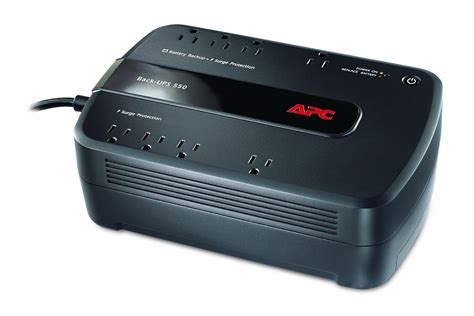What is a 12v DC UPS?
A 12v DC UPS is a power backup system that provides a stable 12-volt direct current (DC) output to connected devices during power disruptions. It consists of a battery, a charging circuit, and an inverter that converts the battery’s DC power to AC power for the connected devices.
Components of a 12v DC UPS
The main components of a 12v DC UPS include:
-
Battery: The battery stores energy and provides power to the connected devices during a power outage. Common battery types used in UPS systems include lead-acid, lithium-ion, and nickel-cadmium batteries.
-
Charging Circuit: The charging circuit ensures that the battery is always charged and ready to provide backup power when needed. It regulates the charging process to prevent overcharging and extend the battery’s life.
-
Inverter: The inverter converts the battery’s DC power to AC power, which is suitable for powering electronic devices. It also regulates the output voltage and frequency to ensure a stable power supply.
-
Transfer Switch: The transfer switch automatically switches the connected devices from the main power source to the UPS when a power outage occurs. It also switches back to the main power source when the power is restored.

Working Principle of a 12v DC UPS
A 12v DC UPS works by constantly monitoring the main power source and switching to the battery backup when a power outage occurs. The following steps describe the working principle of a 12v DC UPS:
-
Normal Operation: During normal operation, the UPS charges the battery and supplies power to the connected devices from the main power source.
-
Power Outage Detection: The UPS constantly monitors the main power source for any fluctuations or outages. When a power outage is detected, the transfer switch automatically switches the connected devices to the battery backup.
-
Battery Backup: The battery provides power to the inverter, which converts the DC power to AC power suitable for the connected devices. The UPS continues to supply power to the devices until the battery is depleted or the main power is restored.
-
Power Restoration: When the main power is restored, the transfer switch automatically switches the connected devices back to the main power source. The UPS then resumes charging the battery to prepare for the next power outage.

Applications of 12v DC UPS
12v DC UPS systems are used in various applications that require a stable and uninterrupted power supply. Some common applications include:
-
Telecommunications: 12v DC UPS systems are used in telecommunications equipment, such as routers, switches, and modems, to ensure uninterrupted network connectivity during power outages.
-
Security Systems: Security systems, such as CCTV cameras, access control systems, and alarm systems, rely on 12v DC UPS to continue functioning during power disruptions.
-
Industrial Automation: Industrial automation systems, such as programmable logic controllers (PLCs) and human-machine interfaces (HMIs), use 12v DC UPS to prevent data loss and ensure continuous operation during power outages.
-
Medical Equipment: Medical devices, such as patient monitors and infusion pumps, require a stable power supply to ensure patient safety. 12v DC UPS systems provide backup power to these devices during power disruptions.
-
Remote Monitoring Systems: Remote monitoring systems, such as weather stations and environmental sensors, use 12v DC UPS to continue collecting data and transmitting it to a central database during power outages.

Maintenance of 12v DC UPS
Regular maintenance is essential to ensure the reliable operation of a 12v DC UPS. The following maintenance tasks should be performed periodically:
-
Battery Maintenance: The battery is the most critical component of a UPS system. Regular battery maintenance, such as checking the electrolyte level, cleaning the terminals, and replacing the battery when necessary, is essential to ensure optimal performance.
-
Inverter Maintenance: The inverter should be inspected for any signs of damage or overheating. Dust and debris should be removed from the inverter to prevent overheating and ensure proper ventilation.
-
Transfer Switch Maintenance: The transfer switch should be tested periodically to ensure that it switches the connected devices to the battery backup during a power outage. Any worn or damaged contacts should be replaced.
-
System Testing: The entire UPS system should be tested periodically to ensure that it functions as intended. This can be done by simulating a power outage and verifying that the UPS switches to the battery backup and provides stable power to the connected devices.
Frequently Asked Questions (FAQ)
-
Q: What is the difference between a 12v DC UPS and a regular UPS?
A: A 12v DC UPS provides a 12-volt direct current output, while a regular UPS typically provides an alternating current (AC) output. 12v DC UPS systems are commonly used for powering devices that require a 12v DC input, such as telecommunications equipment and security systems. -
Q: How long can a 12v DC UPS provide backup power?
A: The duration of backup power provided by a 12v DC UPS depends on the battery capacity and the power consumption of the connected devices. A typical 12v DC UPS with a 100Ah battery can provide backup power for several hours, depending on the load. -
Q: Can a 12v DC UPS be used to power AC devices?
A: No, a 12v DC UPS cannot directly power AC devices. However, an inverter can be used to convert the 12v DC output of the UPS to AC power suitable for powering AC devices. -
Q: How often should the battery in a 12v DC UPS be replaced?
A: The battery in a 12v DC UPS should be replaced every 3-5 years, depending on the usage and environmental conditions. Signs that the battery needs replacement include reduced backup time, swelling, or leakage. -
Q: Can a 12v DC UPS be used in outdoor applications?
A: Yes, a 12v DC UPS can be used in outdoor applications, provided that it is housed in a weatherproof enclosure and protected from extreme temperatures, moisture, and debris.
Conclusion
A 12v DC UPS is a critical component in applications that require a stable and uninterrupted power supply. It provides backup power to connected devices during power outages, ensuring continuous operation and preventing data loss. Understanding the components, working principles, and maintenance requirements of a 12v DC UPS is essential for selecting the right system for a specific application and ensuring its reliable operation.
| Component | Function |
|---|---|
| Battery | Stores energy and provides power to connected devices during a power outage |
| Charging Circuit | Ensures that the battery is always charged and ready to provide backup power |
| Inverter | Converts the battery’s DC power to AC power suitable for powering devices |
| Transfer Switch | Automatically switches connected devices between main power and battery backup |
Table 1: Main components of a 12v DC UPS and their functions.
| Application | Benefit of Using 12v DC UPS |
|---|---|
| Telecommunications | Ensures uninterrupted network connectivity during power outages |
| Security Systems | Allows continuous functioning of CCTV cameras, access control, and alarms |
| Industrial Automation | Prevents data loss and ensures continuous operation of PLCs and HMIs |
| Medical Equipment | Provides a stable power supply to ensure patient safety |
| Remote Monitoring | Enables continuous data collection and transmission during power disruptions |
Table 2: Common applications of 12v DC UPS and their benefits.
By implementing a 12v DC UPS in these applications, users can minimize downtime, prevent data loss, and ensure the safe and reliable operation of critical systems. Regular maintenance and testing of the UPS system are essential to guarantee its performance and longevity.

No responses yet